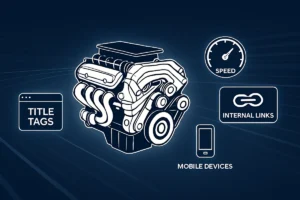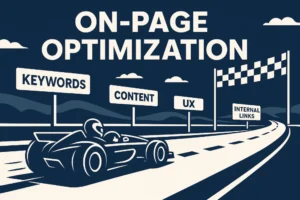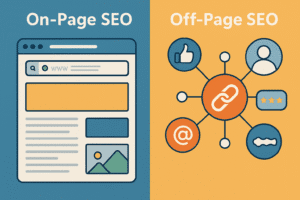In the fast-paced world of e-commerce, efficient ecommerce shipping and fulfillment processes are the backbone of a successful online business. From the moment a customer clicks “Place Order” to the joyous arrival of their package, every step of the shipping and fulfillment journey impacts customer satisfaction, brand loyalty, and ultimately, your bottom line. In this comprehensive guide, we will delve into the intricacies of ecommerce shipping and fulfillment, exploring strategies to streamline your operations, optimize costs, and deliver a delightful experience to your customers.
Why Ecommerce Shipping and Fulfillment Matter
Imagine this: a customer eagerly anticipates the arrival of a product they ordered online. Days turn into weeks, and the package is nowhere to be found. Frustration mounts, and the customer’s perception of your brand takes a hit. This scenario highlights the critical importance of ecommerce shipping and fulfillment.
Efficient shipping and fulfillment are not just about getting products from point A to point B; they’re about creating a positive customer experience that fosters trust and loyalty. A well-oiled shipping and fulfillment process can lead to:
- Increased customer satisfaction: Timely deliveries and transparent tracking information build confidence in your brand.
- Reduced cart abandonment: Customers are more likely to complete their purchase if they trust your shipping and fulfillment capabilities.
- Improved brand reputation: Positive shipping experiences lead to positive word-of-mouth and online reviews.
- Cost savings: Optimized shipping processes can reduce costs associated with packaging, transportation, and returns.
In the competitive e-commerce landscape, where customer expectations are constantly rising, mastering ecommerce shipping and fulfillment is essential for staying ahead of the curve. By streamlining your operations and delivering exceptional service, you can create a loyal customer base and achieve sustainable growth.
Choosing the Right Shipping Carrier for Your Ecommerce Shipping and Fulfillment
The foundation of efficient ecommerce shipping and fulfillment lies in selecting the right shipping carrier. With a plethora of options available, it’s essential to assess your business needs and choose a carrier that aligns with your budget, shipping volume, and destination requirements. This decision is even more critical considering the growing trends in e-commerce.
Major Shipping Carriers and Their Strengths
- USPS: Ideal for small businesses and lightweight packages, offering affordable rates and extensive domestic coverage.
- UPS: Known for reliable ground and air shipping services, particularly for larger packages and international shipments.
- FedEx: Offers a wide range of shipping options, including express and international services, with a reputation for fast delivery.
- DHL: Specializes in international shipping, providing comprehensive solutions for global e-commerce businesses.
Factors to Consider When Choosing a Carrier for Your Ecommerce Shipping and Fulfillment
- Shipping Rates: Compare rates across different carriers to find the most cost-effective option for your specific shipping needs. Consider factors like package weight, dimensions, and destination.
- Delivery Speed: Evaluate the estimated delivery times offered by different carriers. If you offer expedited shipping options, choose a carrier that can meet those expectations.
- Tracking and Insurance: Ensure the carrier provides reliable tracking information and insurance options to protect your shipments in case of loss or damage.
- Customer Service: Choose a carrier with responsive customer service to address any issues that may arise during the shipping process.
- Integration with Your E-commerce Platform: If you’re using an e-commerce platform like WooCommerce, opt for a carrier that integrates seamlessly with your platform to streamline shipping label creation and order tracking.
Need a website that seamlessly integrates with multiple shipping carriers and automates your shipping process? We build websites that do just that! Contact us today to learn more about our e-commerce web design services.
Leveraging Shipping Aggregators
Shipping aggregators like ShipStation and ShippingEasy can simplify the shipping process by consolidating multiple carrier options into a single platform. This allows you to compare rates, print shipping labels, and track shipments from one centralized location.
By carefully evaluating your options and choosing the right shipping carrier(s), you can lay the groundwork for efficient ecommerce shipping and fulfillment, ensuring your products reach your customers quickly and reliably.
Setting Up Shipping Options in WooCommerce for Ecommerce Shipping and Fulfillment
Once you’ve selected your shipping carrier(s), it’s time to configure your shipping options within your e-commerce platform. If you’re using WooCommerce, you’ll find a robust set of tools to manage your ecommerce shipping and fulfillment processes efficiently.
Flat Rate Shipping
This is the simplest option, where you charge a fixed shipping fee for all orders, regardless of weight or destination. It’s easy to set up and can be a good choice for businesses with a limited product range or those that ship primarily within a specific region.
Real-Time Shipping Rates
This option calculates shipping costs in real-time based on the customer’s shipping address, package weight, and dimensions (For more tips, check out our guide on optimizing your e-commerce website, including streamlining the checkout process). It provides accurate shipping costs to customers and can help you avoid undercharging or overcharging for shipping.
Free Shipping
Offering free shipping can be a powerful incentive for customers to complete their purchase. You can offer free shipping on all orders or set a minimum order value to qualify for free shipping.
Local Pickup
If you have a physical storefront, offering local pickup can be a convenient option for customers who live nearby. This can also help you save on shipping costs.
Additional Shipping Options
WooCommerce offers various other shipping options, such as table rate shipping (where you define shipping rates based on weight, destination, or order value), zone-based shipping (where you group shipping destinations into zones and set rates for each zone), and more.
Shipping Classes in WooCommerce
WooCommerce allows you to create shipping classes to group products with similar shipping characteristics. This simplifies the process of setting up shipping rates for different types of products. For instance, you can create a “Heavy Items” shipping class for products that are heavier and more expensive to ship.
Need a website that automatically calculates real-time shipping rates and offers flexible shipping options to your customers? We build e-commerce websites that seamlessly integrate with popular shipping carriers and streamline your fulfillment process. Contact us today for a free consultation!
By leveraging WooCommerce’s flexible shipping options and shipping classes, you can create a customized shipping strategy that meets the unique needs of your business and your customers.
Packaging and Labeling Best Practices for Ecommerce Shipping and Fulfillment
In the world of e-commerce, packaging and labeling are more than just functional necessities; they’re an extension of your brand and a crucial part of the customer experience. A well-packaged and labeled order can leave a lasting positive impression, while a poorly packaged one can lead to damaged goods, customer dissatisfaction, and even negative reviews.
Choosing the Right Packaging Materials
The packaging materials you choose will depend on the types of products you sell and the shipping methods you use. Here are some key factors to consider:
- Protection: The primary function of packaging is to protect your products during transit. Choose materials that are sturdy enough to withstand handling and potential impacts. Corrugated cardboard boxes, bubble mailers, and padded envelopes are common choices.
- Size and Weight: Select packaging that is appropriately sized for your products. Oversized packaging can lead to increased shipping costs, while undersized packaging can leave your products vulnerable to damage.
- Sustainability: Consider using eco-friendly packaging materials, such as recycled cardboard or biodegradable packing peanuts, to minimize your environmental impact.
Labeling Your Packages
Accurate and clear labeling is essential for ensuring that your packages reach their intended destinations. Here are some labeling best practices:
- Shipping Labels: Clearly affix shipping labels with the correct recipient and sender addresses, as well as tracking information. Use a thermal label printer for professional-looking labels.
- Fragile Labels: If you’re shipping fragile items, use “Fragile” labels to alert handlers to take extra care.
- Special Handling Labels: If your products require special handling, such as “This Side Up” or “Do Not Stack,” use appropriate labels to ensure proper handling.
Creating a Memorable Unboxing Experience
Beyond the functional aspects of packaging and labeling, consider how you can create a memorable unboxing experience for your customers. Adding a personal touch, such as a handwritten thank-you note or a small gift, can go a long way in building customer loyalty.
Order Tracking and Management: Keeping Your Customers Informed
In the age of instant gratification, customers expect to be able to track their orders in real-time. Providing accurate and up-to-date tracking information is crucial for managing customer expectations and reducing inquiries about shipping status.
Integrating Order Tracking into Your Ecommerce Shipping and Fulfillment
Most e-commerce platforms, including WooCommerce, offer built-in order tracking functionality. You can typically connect your store to your shipping carrier’s tracking system, allowing customers to track their orders directly from your website or through automated email notifications.
Proactive Communication
Don’t wait for customers to inquire about their orders. Proactively send email notifications at key stages of the shipping process, such as order confirmation, shipment confirmation, and delivery confirmation. This helps keep customers informed and reassured.
Managing Shipping Exceptions
Despite your best efforts, shipping exceptions, such as delays or lost packages, can occur. Have a plan in place to address these situations promptly and professionally. Communicate with the affected customers, offer solutions (such as reshipment or refunds), and apologize for any inconvenience caused.
Order Management Tools
Consider using order management software to streamline your order fulfillment process. These tools can automate tasks like printing shipping labels, generating packing slips, and sending tracking information to customers.
Customer Communication Channels
Offer multiple channels for customers to contact you with questions or concerns about their orders. This could include email, phone, live chat, or social media. Respond promptly and courteously to all inquiries.
By prioritizing order tracking and management, you can enhance the customer experience, reduce support inquiries, and build trust in your brand.
Want to create a website that offers seamless order tracking and effortless communication with your customers? Our team specializes in building e-commerce websites that prioritize customer satisfaction and streamline order management. Let’s discuss your project today!
Ecommerce Returns and Refunds: Turning a Negative into a Positive
No matter how well you manage your shipping and fulfillment process, returns and refunds are inevitable in the world of e-commerce. Customers may change their minds, receive damaged goods, or simply be dissatisfied with their purchase. Handling returns and refunds efficiently and fairly is crucial for maintaining customer satisfaction and protecting your brand reputation.
Establishing Clear Return and Refund Policies
The cornerstone of a successful returns and refunds process is a clear and comprehensive policy. Make sure your policy is easily accessible on your website and clearly outlines the following:
- Eligibility: Specify which products are eligible for returns and refunds.
- Timeframe: Set a reasonable timeframe within which customers can initiate a return or request a refund.
- Condition of Goods: Clearly state the condition in which returned items must be (e.g., unused, in original packaging).
- Refund Method: Explain how refunds will be processed (e.g., back to the original payment method, store credit).
- Shipping Costs: Clarify who is responsible for return shipping costs (the customer or your business).
Streamlining the Returns Process
Make the returns process as easy as possible for your customers. Provide a prepaid return label or offer free returns to encourage customers to shop with confidence.
Processing Refunds Promptly
Once you receive a returned item, inspect it to ensure it meets your return policy criteria. If everything is in order, process the refund promptly. This helps build trust with your customers and demonstrates your commitment to excellent customer service.
Turning Returns into Opportunities
While returns can be a hassle, they can also be an opportunity to learn and improve. Analyze your return data to identify patterns or issues with specific products. Use this feedback to enhance your product descriptions, improve quality control, or adjust your inventory management practices.
By handling returns and refunds professionally and efficiently, you can turn a potentially negative experience into a positive one, fostering customer loyalty and strengthening your brand’s reputation.
Conclusion: Your Roadmap to Ecommerce Shipping and Fulfillment Success
Mastering ecommerce shipping and fulfillment is an ongoing journey, but with the right strategies and tools, you can streamline your operations, delight your customers, and drive business growth. By carefully selecting shipping carriers, optimizing your shipping options, implementing best practices for packaging and labeling, providing transparent order tracking, and handling returns and refunds efficiently, you can create a seamless and positive experience for your customers from checkout to delivery. To further enhance the checkout experience, ensure your payment gateway integration is seamless and secure.
Remember, efficient shipping and fulfillment is not just about logistics; it’s about building trust, fostering loyalty, and creating a brand that customers love. By prioritizing the customer experience at every step of the shipping journey, you can set your e-commerce business apart from the competition and achieve long-term success.
If you’re looking for expert guidance on optimizing your ecommerce shipping and fulfillment processes, consider partnering with a web design agency that specializes in e-commerce solutions. They can help you implement the strategies and tools discussed in this guide, ensuring that your shipping and fulfillment operations run smoothly and efficiently.
With dedication, attention to detail, and a focus on customer satisfaction, you can transform your shipping and fulfillment processes into a competitive advantage that drives your e-commerce business forward.

I design high-performing WordPress + Elementor websites and WooCommerce stores that rank on Google and convert visitors into customers. At Katmantra Web Design and SEO, I combine clean design with smart SEO so your site works as hard as you do.







